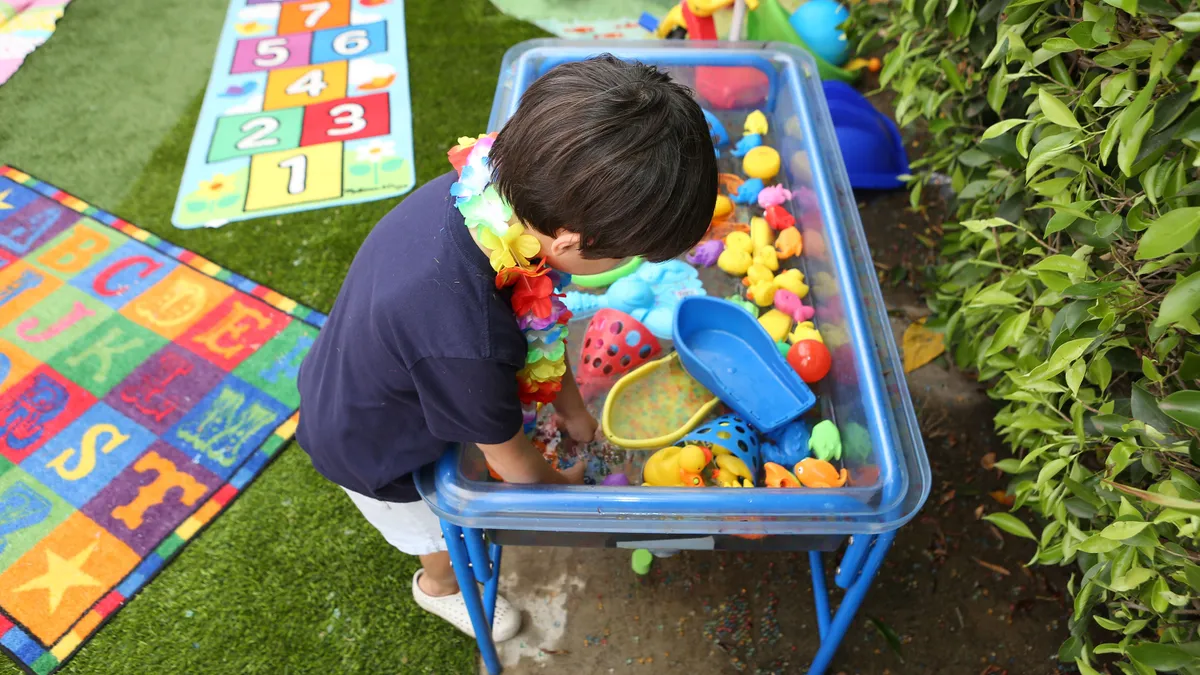Dive Brief:
- During a Wednesday webinar hosted by the National Institute for Early Education Research and Home Grown, a collaborative that advocates for quality home-based child care, panelists said schools looking to expand pre-K programming shouldn't overlook center or home-based child care providers, but should work instead to build partnerships to offer services that can be delivered in a variety of settings.
- The inclusion of Family Child Care homes (FCCs) in publicly-funded pre-K programs may give communities opportunities to address issues such as school preparedness, workforce capacity and equity, linguistic and cultural responsiveness, family choice, and a lack of center-based providers, according to a report from NIEER and Home Grown.
- But while there are many potential benefits for such partnerships, successful programming relies on strategic planning by various stakeholders, cost and quality analyses, and the training and mentoring of FCC providers who may need to meet new operation standards, the panelists said.
Dive Insight:
Currently, 7 million children ages birth to 5 are in home-based child care, which can include licensed programs or more informal family, friend or neighbor settings. FCCs disproportionately include children from low-income families, Black and Latinx children, and children whose parents work nontraditional jobs with unpredictable hours, according to panelist Natalie Renew, director of Home Grown.
“We believe that pre-K, when it intentionally includes family child care, can increase resources and support for principle quality for all children in the family child care setting,” said Renew, adding that inclusive early childhood structures would add to the knowledge base of best practices to prepare young children for formal schooling.
About half of the programs in 24 states allow FCCs to receive state pre-K dollars either directly from the state or through subcontracting, according to NIEER and Home Grown’s research. Seven of the 24 states, however, reported FCCs did not participate in the state pre-K program in 2019-20.
When the Seattle Department of Education and Early Learning’s universal pre-K programming began in 2015, the department started by partnering with district schools and center-based early education providers, said panelist Monica Liang-Aguirre, the department’s early learning director.
Since FCCs in the area represent a number of immigrant and refugee families, the department wanted to be thoughtful about providing families with school, center and FCC-based options when it began including FCCs in programming in 2017, Liang-Aguirre said.
Along with stakeholders, Seattle's education department helped design pilot programs and a hub system to assist child care providers with managing operations. The entities that run the hub system serve as a network of support for FCCs, providing technical assistance to meet the Seattle preschool program requirements, Liang-Aguirre said. The city also provides coaching and professional development to FCCs, she said.
Additionally, panelists advised that as school systems collaborate with partners to include FCCs in pre-K options, they consider:
- Enhancing and expanding existing early childhood programming.
- Making FCC participation in pre-K programs allowable and attractive but not required.
- Establishing equivalent, but not necessarily identical, program standards for school and center-based programs and FCC offerings, with an ongoing program evaluation system allowing improvements over time.
- Providing professional development and in-service training to FCC providers with the flexibility that some training be offered evenings and weekends.







 Dive Awards
Dive Awards






